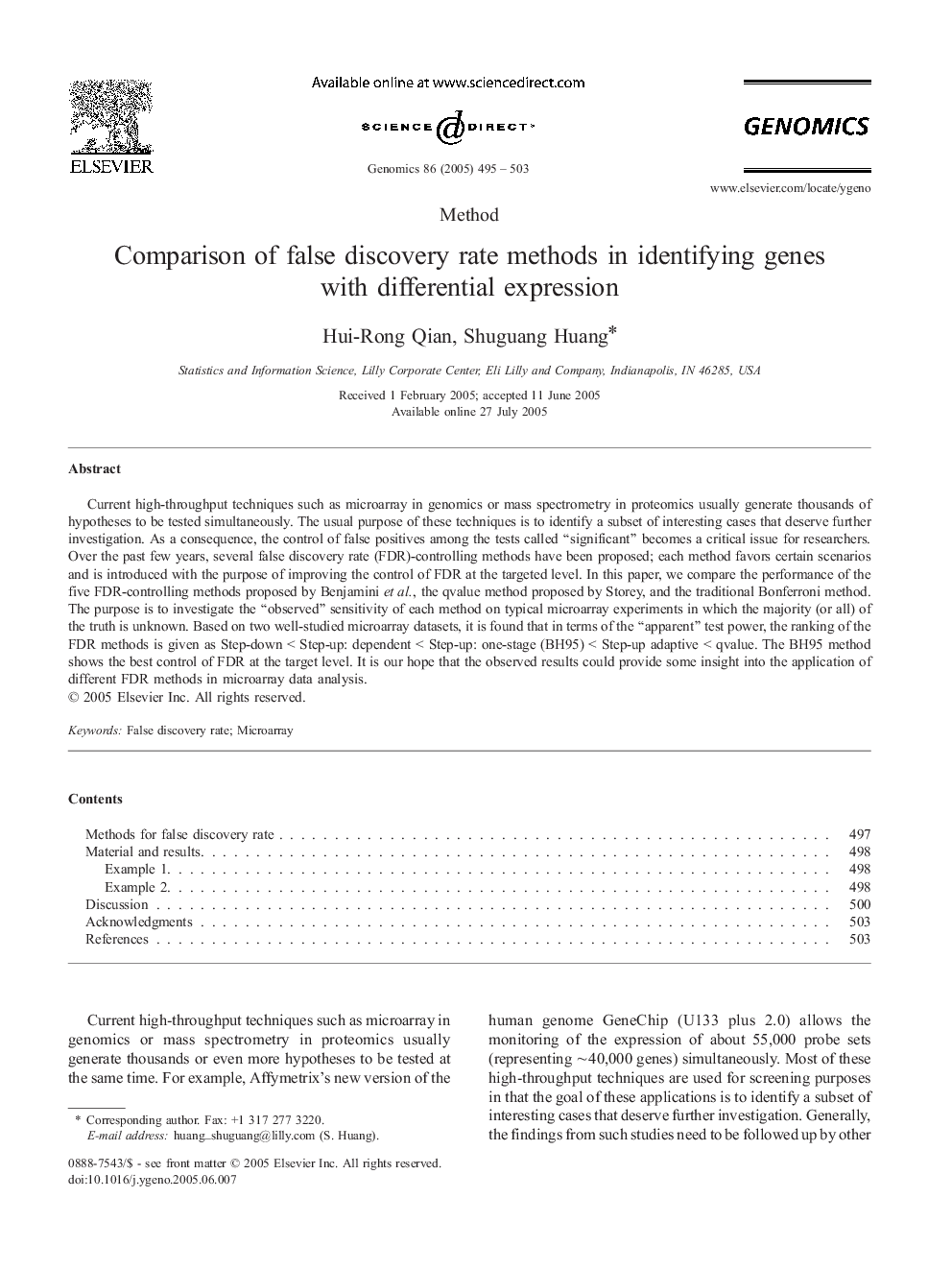| کد مقاله | کد نشریه | سال انتشار | مقاله انگلیسی | نسخه تمام متن |
|---|---|---|---|---|
| 9131862 | 1160954 | 2005 | 9 صفحه PDF | دانلود رایگان |
عنوان انگلیسی مقاله ISI
Comparison of false discovery rate methods in identifying genes with differential expression
دانلود مقاله + سفارش ترجمه
دانلود مقاله ISI انگلیسی
رایگان برای ایرانیان
موضوعات مرتبط
علوم زیستی و بیوفناوری
بیوشیمی، ژنتیک و زیست شناسی مولکولی
ژنتیک
پیش نمایش صفحه اول مقاله

چکیده انگلیسی
Current high-throughput techniques such as microarray in genomics or mass spectrometry in proteomics usually generate thousands of hypotheses to be tested simultaneously. The usual purpose of these techniques is to identify a subset of interesting cases that deserve further investigation. As a consequence, the control of false positives among the tests called “significant” becomes a critical issue for researchers. Over the past few years, several false discovery rate (FDR)-controlling methods have been proposed; each method favors certain scenarios and is introduced with the purpose of improving the control of FDR at the targeted level. In this paper, we compare the performance of the five FDR-controlling methods proposed by Benjamini et al., the qvalue method proposed by Storey, and the traditional Bonferroni method. The purpose is to investigate the “observed” sensitivity of each method on typical microarray experiments in which the majority (or all) of the truth is unknown. Based on two well-studied microarray datasets, it is found that in terms of the “apparent” test power, the ranking of the FDR methods is given as Step-down < Step-up: dependent < Step-up: one-stage (BH95) < Step-up adaptive < qvalue. The BH95 method shows the best control of FDR at the target level. It is our hope that the observed results could provide some insight into the application of different FDR methods in microarray data analysis.
ناشر
Database: Elsevier - ScienceDirect (ساینس دایرکت)
Journal: Genomics - Volume 86, Issue 4, October 2005, Pages 495-503
Journal: Genomics - Volume 86, Issue 4, October 2005, Pages 495-503
نویسندگان
Hui-Rong Qian, Shuguang Huang,